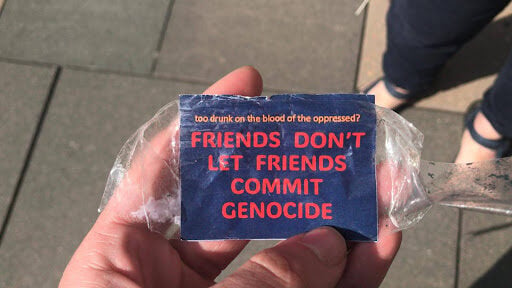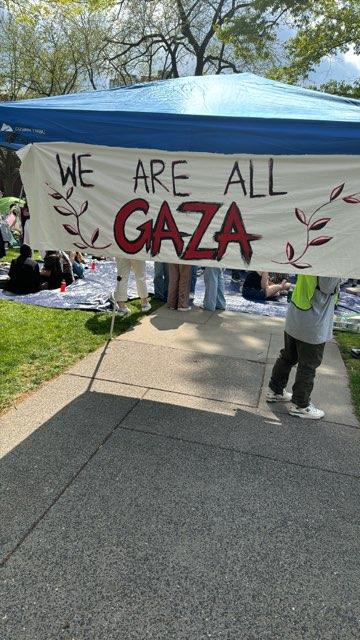In his “Torah from Eretz Yisrael” article (“The L-Word” February 10, 2022), Rabbi Moshe Taragin describes a model of leadership based on the vestments of the Kohen Gadol. It is very appropriate that this was his approach, as his model, that of someone who inspires individuals and leads them to embrace the correct path, was indeed that of Aharon Hakohen. Such a model is likely the intent of Hillel’s motto, “be like the students of Aharon,” as described in Pirkei Avot.
There is, however, another form of leadership, one that is more often associated with the word: That of leading a nation, community, or organization. We can then ask: Is the model of Aharon Hakohen suitable for this form of leadership as well? The answer is somewhat mixed. To some extent it is: Hillel did serve as a national leader (though political power rested in the hands of the Hasmonean dynasty), and Aharon likewise led the nation in Egypt (under the yoke of the Egyptians) and to some extent in the wilderness alongside Moshe Rabbeinu. On the other hand, there was one time in the wilderness that Aharon took “primary” leadership of the nation with no one above him, when Moshe went up to Har Sinai…. The result of this was the disastrous incident of the golden calf, the eigel hazahav, that forms the primary theme of this week’s parsha.
This raises the question: What about Aharon’s model of leadership, as described by Rabbi Taragin, makes it so unsuitable for being the primary leadership of a nation or community? Examining the four messages from the vestments, we see no obstacle to national leadership. The message of the ephod to take on the burdens of others, and that of the choshen to empathize with them, are very necessary for a community leader (albeit in a somewhat more abstract form); one need only see how Moshe Rabbeinu (the quintessential community leader) defended bnei yisrael time and time again to see the suitability of such messages for national leaders. The message of the me’il, not to become too comfortable or egotistic, is if anything more important for this sort of leader; again, we can look to Moshe as an example for humility in leadership. The message of the tzitz, of appreciating human frailty, is more complex for a national leader, but nevertheless present; while Moshe Rabbeinu did chastise the people, he either did so when they were not at a low point (for instance, when they were about to enter Eretz Yisrael), or did so (as in this week’s parsha) in conjunction with demonstrating his commitment to them and a sincere wish that they be forgiven. So what about Aharon’s model resulted in such disaster when he was put in charge of the people?
I believe the answer is to be found at the beginning and very end of Rabbi Taragin’s dvar torah, before and after he discusses the individual lessons of the vestments. At the beginning, he states that “leadership is not about imposing your views and ideas upon others”, and at the end he states “leadership has little to do with influence or decision making”. These are the parts of Aharon’s model that are unsuitable for primary leadership of a nation, community, or institution. In such a role, one will inevitably be called upon to make decisions, as Aharon was when the people came to him with the demands that would result in the golden calf. One who is not willing to impose on others when it is proper to do so will find that they have no recourse but to give in to the people’s demands, as did Aharon in this week’s parshah, and likewise as Sha’ul Hamelech did in the incident with Amalek that we will read about in the haftarah in a few weeks.
It is true that a national leader cannot (to borrow phrases from Rabbi Taragin) simply browbeat others with his charisma, personality, or other means of coercion; this is the path of the bully if done for personal aggrandizement, or of the zealot if done l’sheim shamayim (as it was when Eliyahu declared a famine not long before this week’s haftarah). If one is to impose on others as a leader, it must be done as Moshe Rabbeinu did when he came down and saw the eigel; first, he called “mi lashem eilai,” “whoever is for Hashem, to me!,” and only when he had some degree of support did he instruct them to impose (by the sword) that which needed to be imposed.
Thus, we have two models of leadership: The personal/inspirational model exemplified by Aharon, and the national/impositional model exemplified by Moshe? (As a side note, the alignment of Moshe and Aharon
with these two models also aligns very well with the way that Rabbi Aryeh Kaplan zt”l, in his Inner Space, explains the kabbalistic sefirot associated with them, which is in turn based on sources in Chazal.) We can thus ask one final question: Which of the two is more valuable? To answer this, we need only look at the Midrash, which notes that at times Moshe’s name comes first and at times Aharon’s comes first, and concludes that they were equal.
Indeed, both forms of leadership are necessary. The impositional model exemplified by Moshe cannot inspire people to do the right thing of their own volition, but requires that when it is necessary to say “mi lashem eilai”, there will be people to answer, having been inspired by those leaders following the model of Aharon. On the other hand, not everyone is open to inspiration, and many people have yet to be inspired. In the absence of Moshe’s model to address the demands of such individuals, they can easily pressure leadership into causing great tragedy, either out of fear of the people (as in the case of Aharon and Sha’ul), or out of a misapplied desire for bridge-building.
Rachel Friedman
Teaneck













